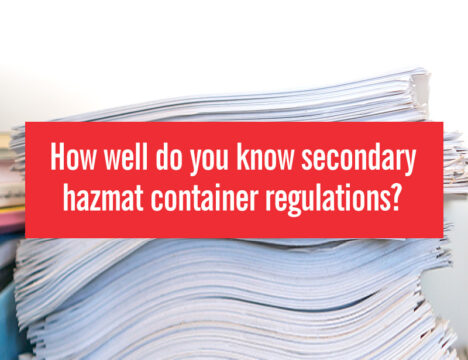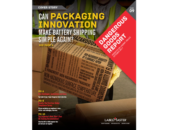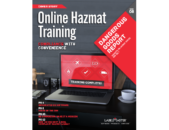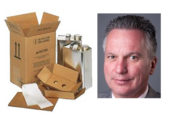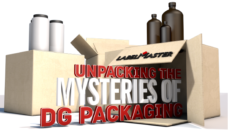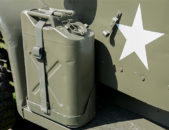Secondary hazmat containment used to mean one thing: paint cans. But now, shippers are switching to new Capsuloc™—the screw-top secondary container that’s lighter weight, more durable and easier to use than paint cans, now with a special permit (DOT-SP 21488) and accepted as exemption by UPS and FedEx. How well do you know the regulations…
Dangerous Goods Report | Vol. 10
Summary: Volume 10 of the Dangerous Goods Report introduces a new framework that helps businesses realize a positive return on investment from their hazmat compliance programs—Total Value of Compliance. It also examines how advanced packaging technology simplifies the transport of damaged, defective or recalled lithium batteries and battery devices, and looks at the safety considerations…
Dangerous Goods Report | Vol. 9
Summary: Volume 9 of the Dangerous Goods Report looks at an innovation that may change how we transport lithium batteries and battery devices, despite all the safety and regulatory hurdles involved. We also assess the unique challenges facing seven industries that ship Dangerous Goods, and review the eye-opening findings of our first-ever international DG compliance…
Dangerous Goods Report | Vol. 8
Summary: DG Training Online—Compliance with Convenience. Dangerous Goods trainers embrace interactive online training as a stress-reducing solution. Integrated DG Software = Streamlined Compliance. Why more of today’s hazmat shippers are integrating DG software with their ERPs. State of the Ion. A snapshot of current lithium battery shipping regulations, and the packaging breakthrough that may make battery shipping less…
Q&A with 30-year hazmat packaging veteran Bill Barger: “2017 is our year.”
Since joining Labelmaster last June, Senior Packaging Product Manager Bill Barger has connected with customers nationwide to make sure we’re not just meeting their packaging needs, but anticipating them. A Pittsburgh native who still calls himself a die-hard Steelers, Pirates and Penguins fan, Bill has seen a lot of progress over three decades in the…
Dangerous Goods Report | Vol. 7
Summary: HM-215: Are you ready for the border patrol? If you ship Dangerous Goods, don’t let new border measurement regulations for labels and placards catch you unprepared. Ship damaged batteries in a fiberboard box? Yes, you can! Just in time for the largest cell phone recall ever—new Special Permit Packaging makes reverse logistics easier and…
Infographic | Unpacking the Mysteries of DG Packaging
Why is hazmat packaging so complex? And how do you get it right? Read on to learn what regulations govern Dangerous Goods packaging and how to interpret them. A packaging partner with deep expertise can help you think “inside the box,” and keep your shipments safe and compliant. What seems like a simple objective—ensuring the…
Shipping damaged lithium batteries? Say hello to Special Permit Packaging!
Of all the headaches associated with shipping lithium batteries, the most acute of them might be return shipments of damaged or defective cells/batteries, or the equipment containing them. If that headache sounds familiar, we now have your ibuprofen. Based on a special permit from the U.S. Department of Transportation that grants relief from 49 CFR…
9 things you might not know about jerricans and pails
Maybe you’re one of the hundreds of people who buy our jerricans and pails. After all, they’re indispensable for all kinds of liquid transport and storage purposes. But for all the times you’ve filled, emptied, shipped and stored jerricans and pails, we bet you’ve never stopped to ponder them. Well, we have, and we’ve…
Dangerous Goods Report | Vol. 6
Summary: The Elements of Compliant Packaging: Why hazmat packaging comes in so many different forms, configurations and sizes. Infographic: Your Guide to Retail Reverse Logistics, or, “How to Keep Returns from Coming Back to Haunt You” It’s July 2016. Do you know where your hazcom compliance stands? Every workplace in the US should now—in theory,…
